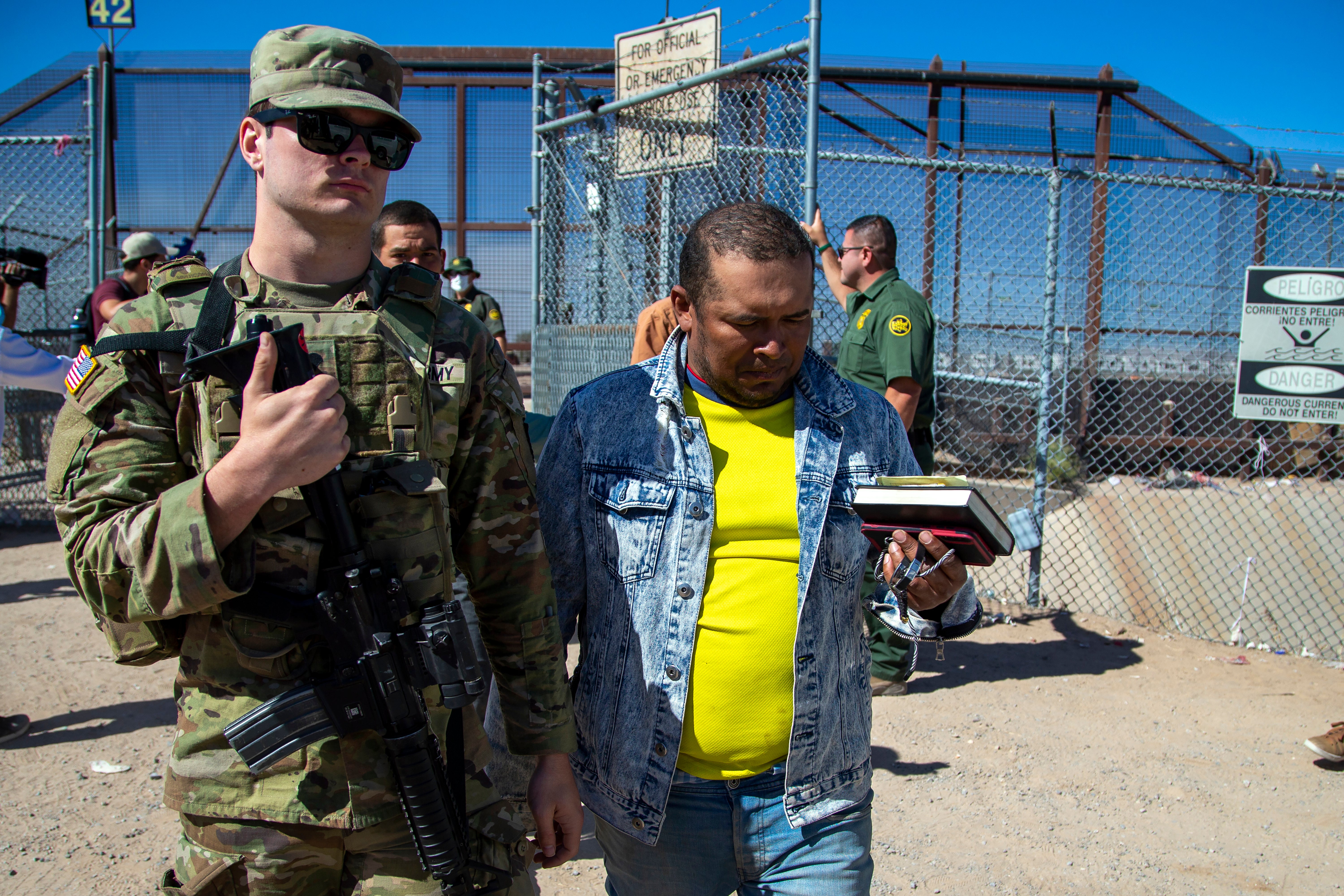The Pentagon is pulling 1,100 troops from the US-Mexico border mission
The Pentagon is pulling 1,100 troops from the U.S.-Mexico border that it had deployed in response to a surge in migrant crossings

Your support helps us to tell the story
From reproductive rights to climate change to Big Tech, The Independent is on the ground when the story is developing. Whether it's investigating the financials of Elon Musk's pro-Trump PAC or producing our latest documentary, 'The A Word', which shines a light on the American women fighting for reproductive rights, we know how important it is to parse out the facts from the messaging.
At such a critical moment in US history, we need reporters on the ground. Your donation allows us to keep sending journalists to speak to both sides of the story.
The Independent is trusted by Americans across the entire political spectrum. And unlike many other quality news outlets, we choose not to lock Americans out of our reporting and analysis with paywalls. We believe quality journalism should be available to everyone, paid for by those who can afford it.
Your support makes all the difference.The Pentagon is pulling 1,100 active duty troops from the U.S.-Mexico border it deployed earlier this year as the government prepared for the end of asylum restrictions linked to the pandemic.
Defense Secretary Lloyd Austin approved the deployment of a total of 1,500 active duty troops for a temporary 90-day military presence surge at the border in May. At the time, illegal border crossings were swiftly escalating with concerns they’d go even higher after the restrictions ended but instead the numbers have fallen.
The 1,100 troops will conclude their 90-day mission by Aug. 8; the remaining 400 will be extended through August 31, a defense official said on the condition of anonymity to discuss details ahead of an announcement.
At the time the troop movements were made public officials stressed that the active-duty troops would not be taking front-line positions on the border or interacting with migrants but instead doing tasks like data entry or warehouse support with the goal of freeing up Customs and Border Protection personnel to be out in the field.
The troops were intended to help back up border officials dealing with the end of Title 42. That rule allowed the government to quickly expel tens of thousands of migrants from the country in the name of protecting America from COVID-19.
In the days leading up to the end of Title 42, border agents were encountering 10,000 migrants a day and at one point had 27,000 migrants in custody. But immediately after Title 42 expired, the numbers dropped sharply to about 5,000 encounters a day, and have stayed low, according to the agency's data.
But it’s far from clear how permanent these drops are. Already the number of people crossing the Darien Gap, a key route for migrants headed to the U.S. from South America, during the first seven months of the year is more than all of 2022 combined.
The active duty military troops' departure is also happening as much of the Biden administration’s immigration agenda is subject to court challenges. Last week a federal judge ruled that an administration rule limiting asylum access at the southern border was against the law. The administration is appealing that ruling, arguing that it’s a key part of their efforts to maintain order on the border.
Separately the Justice Department last week announced it has sued Texas Gov. Greg Abbott to force the state to remove floating buoys in the Rio Grande that the federal government says present a humanitarian and environmental concern.
The departures also do not impact an additional 2,300 National Guard troops under federal orders who remain at the border in similar supporting roles, National Guard chief Gen. Dan Hokanson said last week. Those troops will not be extended, but other units will be rotated in to replace them when their deployments end.
Austin has tried to get the Department of Homeland Security to fully assume the border protection role instead of continually relying on military troops. As a condition for Austin’s previous approval of National Guard troops to the border through Oct. 1, Homeland Security had to agree to work with the White House and Congress to develop a plan for longer-term staffing solutions and funding shortfalls.
In a response to the AP, the Pentagon said DHS has outlined a plan to increase personnel and technology investments to meet future surges.